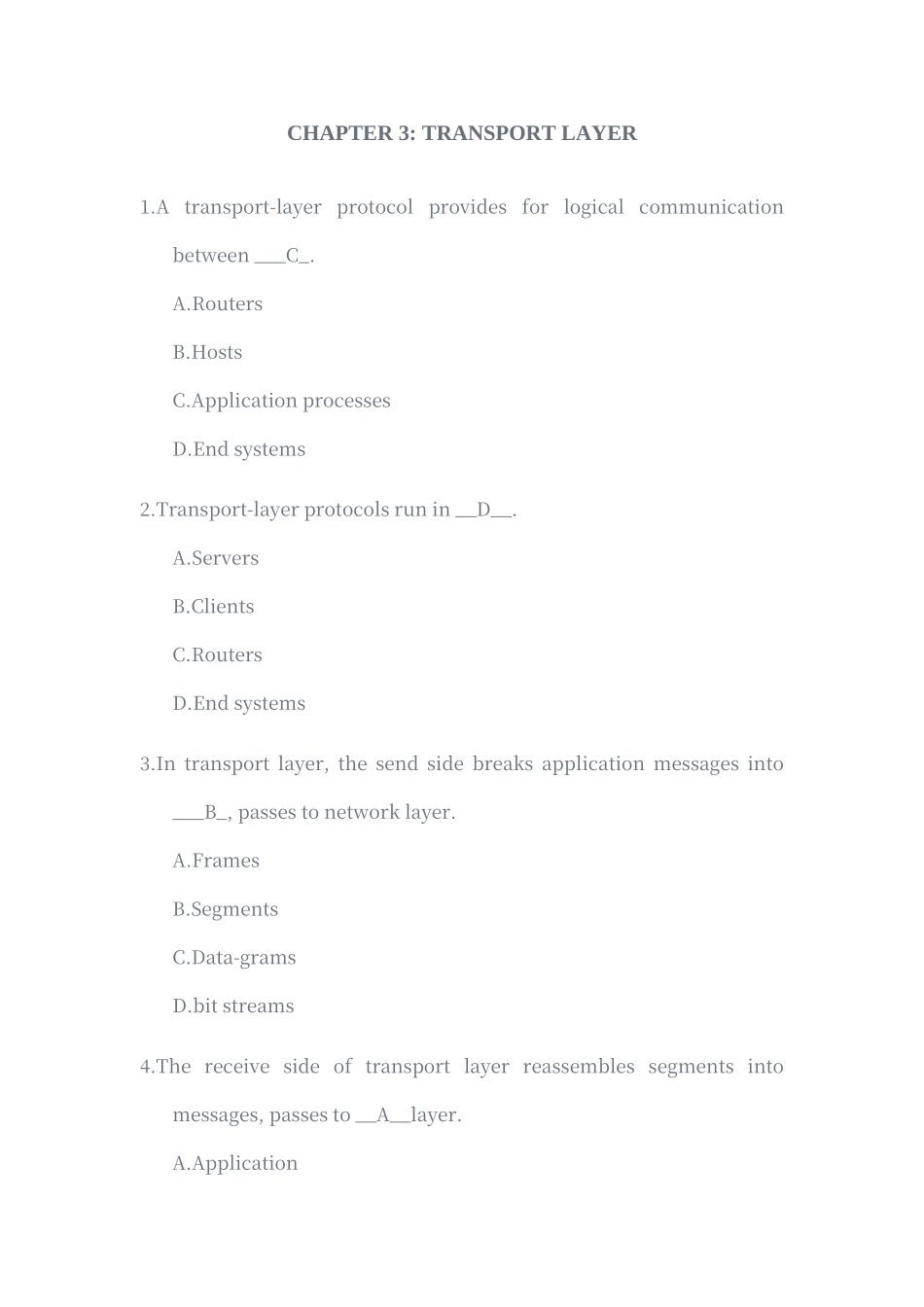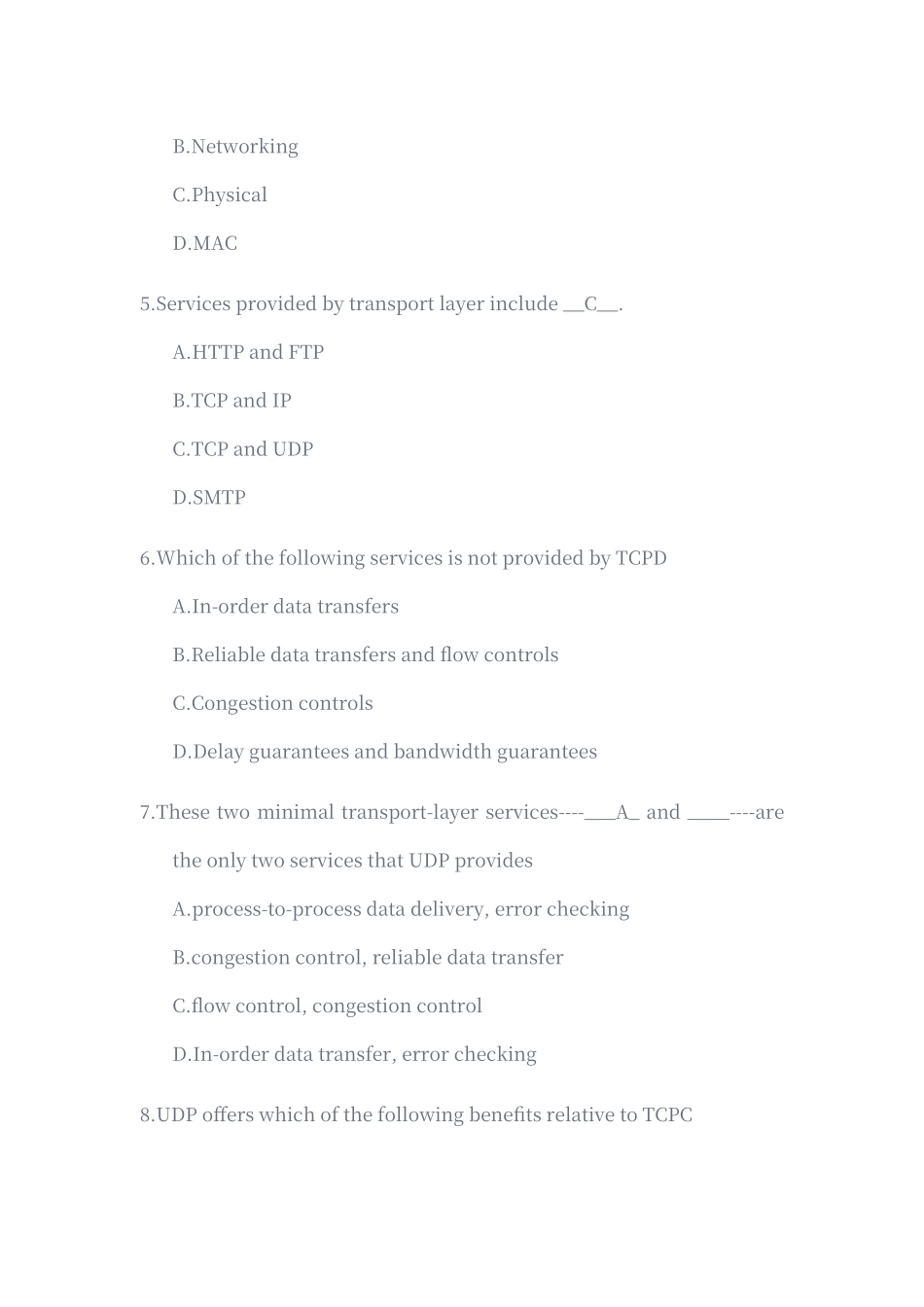CHAPTER 3: TRANSPORT LAYER1.A transport-layer protocol provides for logical communication between ___C_.A.RoutersB.HostsC.Application processesD.End systems2.Transport-layer protocols run in __D__.A.ServersB.ClientsC.RoutersD.End systems3.In transport layer, the send side breaks application messages into ___B_, passes to network layer.A.FramesB.SegmentsC.Data-gramsD.bit streams4.The receive side of transport layer reassembles segments into messages, passes to __A__layer.A.ApplicationB.NetworkingC.PhysicalD.MAC5.Services provided by transport layer include __C__.A.HTTP and FTPB.TCP and IPC.TCP and UDPD.SMTP6.Which of the following services is not provided by TCPDA.In-order data transfersB.Reliable data transfers and flow controlsC.Congestion controlsD.Delay guarantees and bandwidth guarantees7.These two minimal transport-layer services----___A_ and ____----are the only two services that UDP providesA.process-to-process data delivery, error checkingB.congestion control, reliable data transferC.flow control, congestion controlD.In-order data transfer, error checking8.UDP offers which of the following benefits relative to TCPCA.UDP guarantees that Individual packets of a transmission will arrive “in order”B.UDP supports a self-regulating “throttle” feature that prevents network saturationC.UDP consumes fewer computer resources by not maintaining connection stateD.None of the above9.Which of the following applications normally uses UDP servicesBA.SMTPB.Streaming multimediaC.FTPD.HTTP10.The job of gathering data chunks, encapsulating each data chunk with header information to create segments and passing the segments to the network is called __A__.A.multiplexingB.de-multiplexingC.forwardingD.routing11.This job of delivering the data in a transport-layer segment to the correct...


